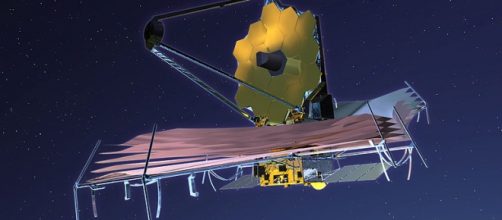NASA, in collaboration with three space agencies and other countries is preparing the launch of the most powerful telescope ever put in orbit for the study of the universe. James Webb Space Telescope (JWST) is scheduled to be sent into space in the Fall of 2018. This telescope will study the most distant objects of the universe – more distant than what the present ground and space-based telescopes have been able to observe.
Mission
To search for the formation of the first galaxies just after the big bang; study the way in which galaxies grow and collect, and how black holes develop in those galaxies; how stars and protoplanetary systems originated, and get a deeper understanding of the way in which planetary systems are forming in the present day.
Overall, the primary objective of the telescope is to study the universe and the origins of life.
JWST
This telescope is designed with 18 segmented beryllium coated primary mirrors – 6 times the area of Hubble Space Telescope, but with 100 times its light gathering power. A tennis court sized sunshield will provide it with the right temperature for the mirrors to function properly. JWTS will mainly observe the cosmos in the near-infrared part of the electromagnetic spectrum; however, it will also be capable of detecting light in the visible range of the spectrum, particularly the mid-red and the yellow part of the visible spectrum.
JWST is planned to operate in (L2) Lagrange point at nearly 1,500,000 km (930,000 miles) in orbit around the earth.
It will extend the discoveries made by Hubble, studying the deep and far space in the infrared spectrum, as opposed to Hubble which only covered the ultraviolet and visible spectrum, although with some infrared capabilities too.
JWST will be capable of viewing the universe as it appeared 250 million years after the Big Bang, when the first stars and galaxies began to accrue gas and dust. Studying the universe in longer wavelengths will allow JWST to search much further into the very early beginnings of the universe.

